Programmatic SEO: What It Is and When to Use It (+ Examples)
Imagine if your website could rank for every single keyword related to your niche. That’s the promise of programmatic SEO. It’s how Tripadvisor creates “Things to Do in” pages for countless locations across the globe… …and ranks for almost...

Imagine if your website could rank for every single keyword related to your niche.
That’s the promise of programmatic SEO.
It’s how Tripadvisor creates “Things to Do in” pages for countless locations across the globe…

…and ranks for almost 100K keywords featuring the words “things to do in”:
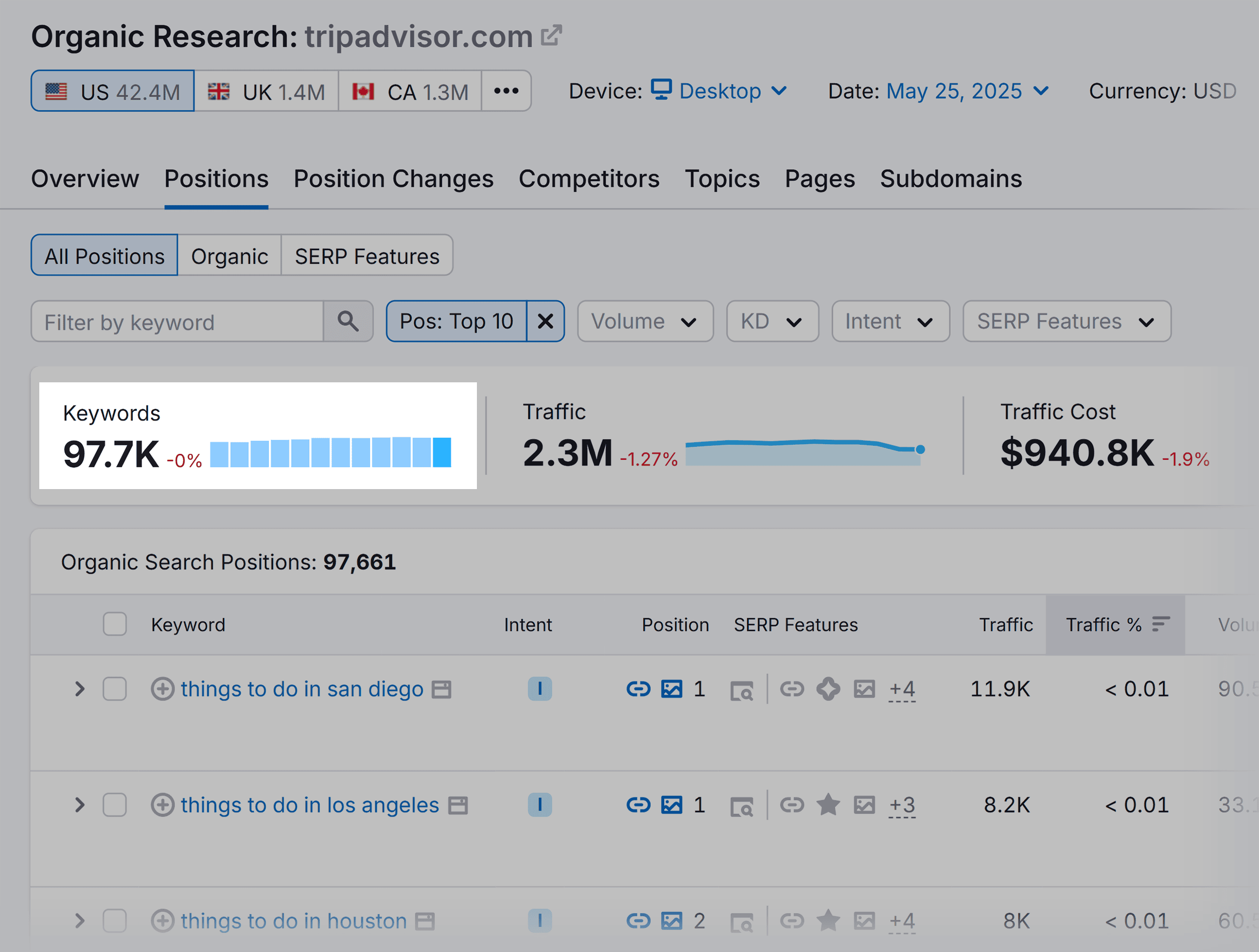
But the reality is more nuanced. It’s not a magic trick that’ll instantly drive traffic.
And we’ve seen programmatic plays go wrong countless times (more on that below).
The real differentiator nowadays isn’t the ability to create thousands of pages. It’s whether those pages actually deserve to rank.
In this guide, I’ll show you when programmatic SEO works, when it doesn’t, and how you can build your own winning programmatic SEO strategy.
What Is Programmatic SEO?
Programmatic SEO, also referred to as pSEO, is the systematic creation of content at scale using templates and data to target thousands (sometimes millions) of related search queries. The goal is to drive traffic and revenue through these automatically generated pages.
Put another way:
You create landing pages at scale to rank in lots of search results.
In traditional content marketing, you create individual articles targeting specific keywords. With programmatic SEO, you automate page creation based on patterns in search behavior.
Each page uses the same template structure, layout, and core elements. The only things that change are the keywords you’re targeting.

You use automation to spin up hundreds or thousands of variations. Each one targets different long-tail keywords with relatively low competition.
The goal is to drive traffic, build authority, and generate revenue for your business — at a volume you couldn’t replicate manually.
4 Successful Programmatic SEO Examples
Use the programmatic SEO examples below to get inspired and understand how to spot patterns that make good candidates for programmatic campaigns.
1. Wise
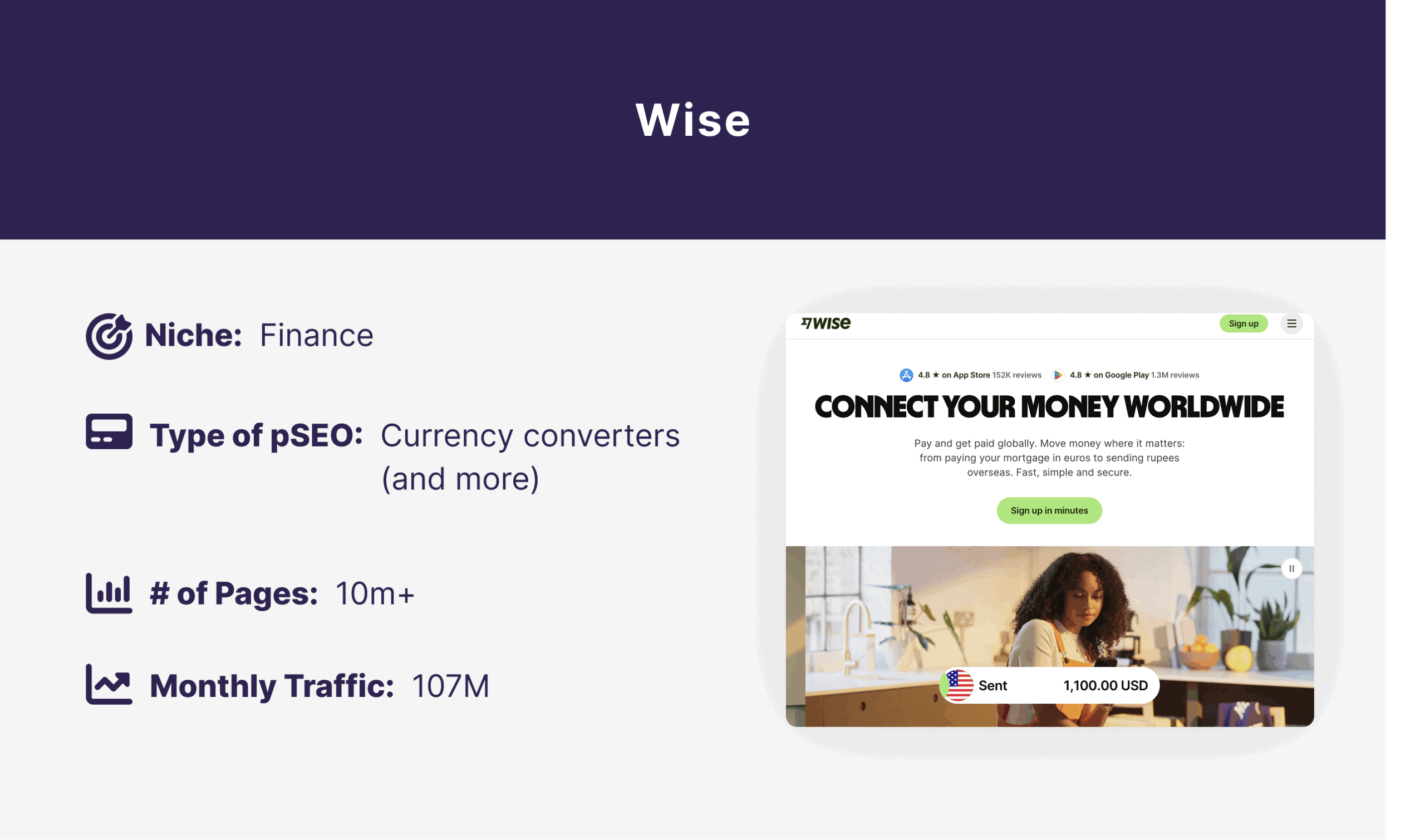
Wise is a global financial platform that helps users send, spend, and receive money internationally.
You’ll see Wise as a common example of programmatic SEO in action, generally for their currency converter pages. But most discussions on the topic don’t properly convey the true scale of Wise’s pSEO play.
The total number of currency converter pages across Wise’s domain (including across different global subfolders like /gb/ and /us/) is a whopping 8.5 million.
Not tens of thousands. Millions of pages. That all look like this:

How do I know there are that many?
Because Wise’s main sitemap index contains 170 individual sitemaps for the currency converter pages alone (it starts at “sitemap-0”):
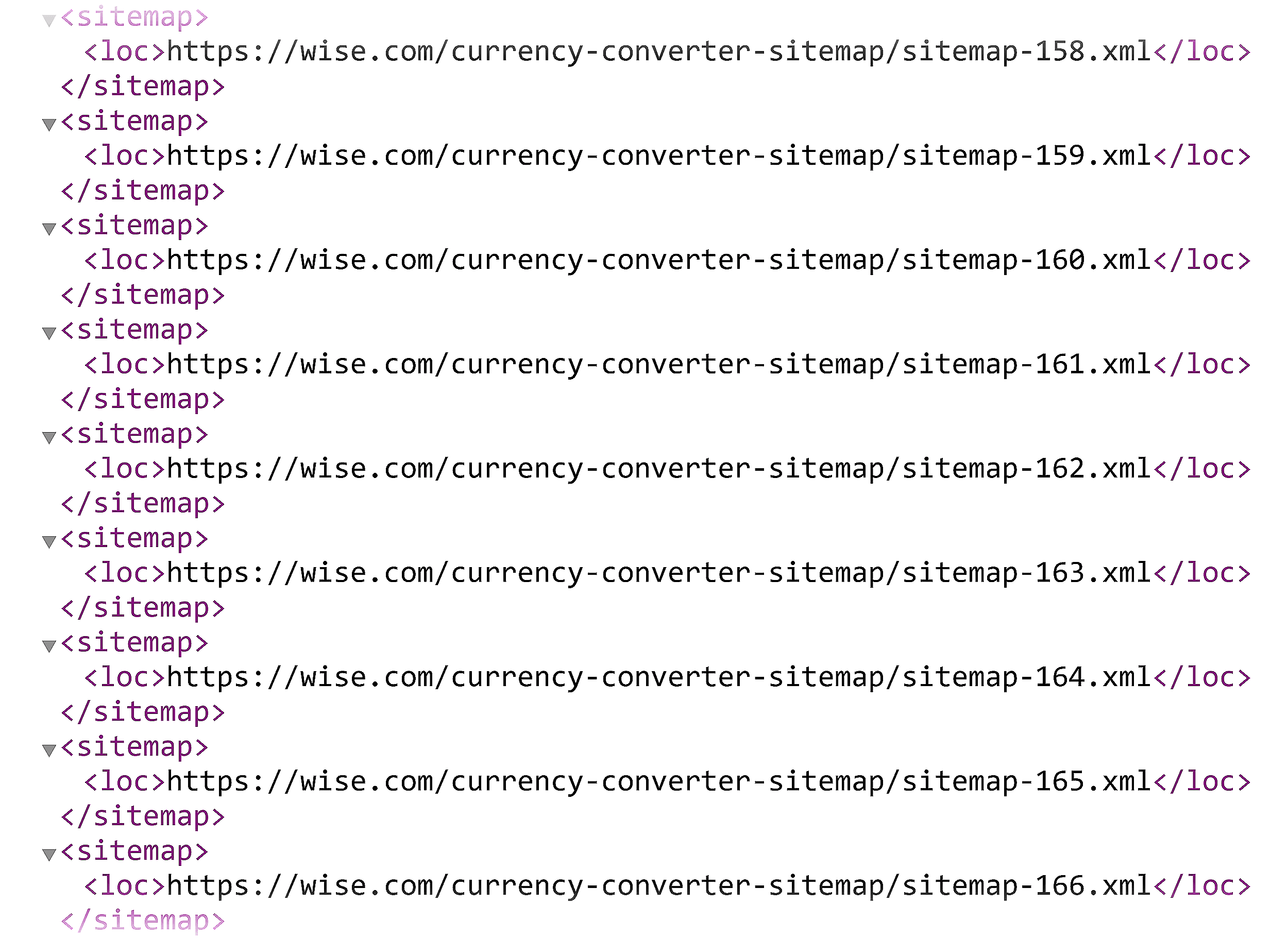
And each of those contains 50K individual URLs (except the last one, which has just under 47K):
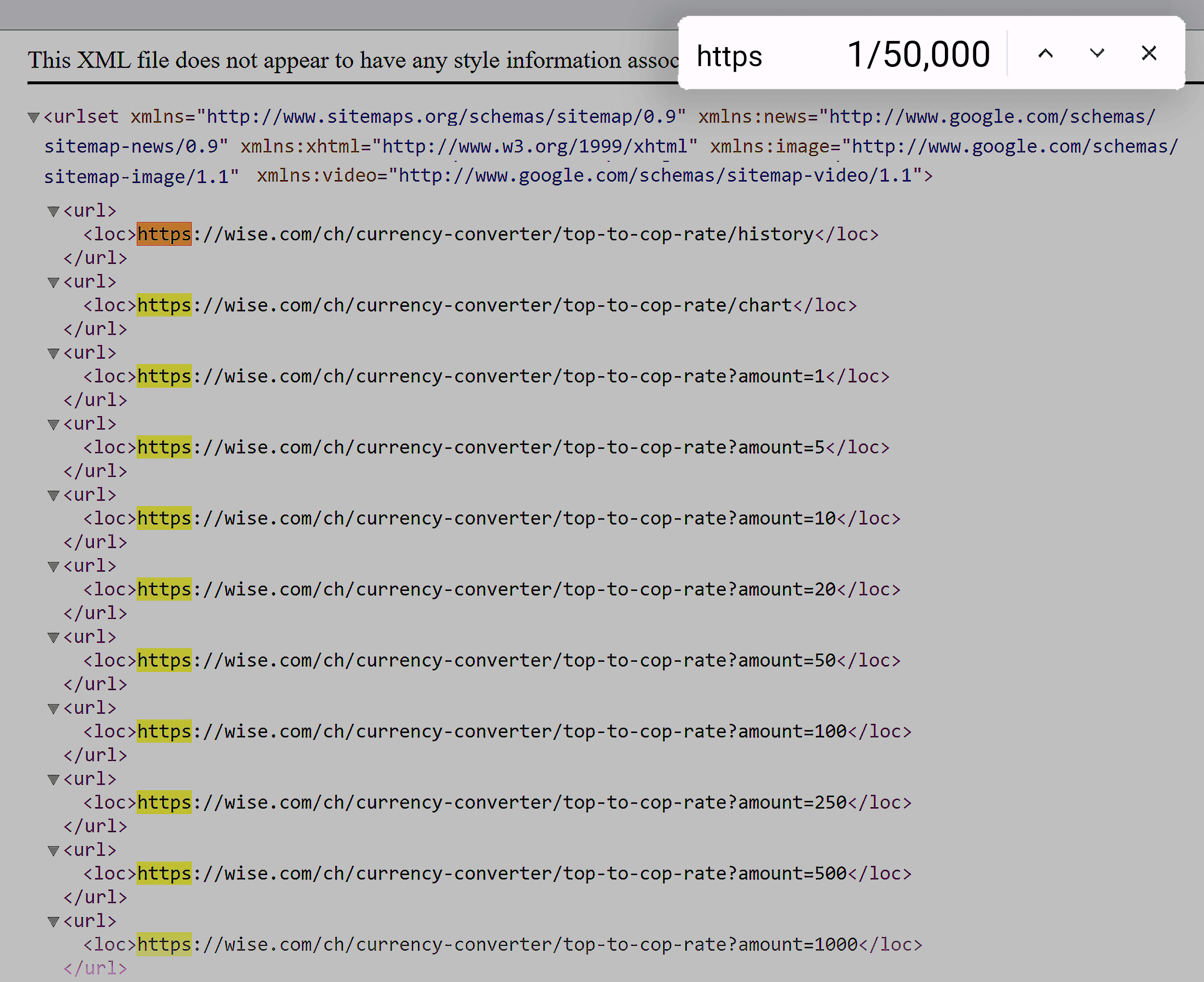
All of which are indexable and canonicalized:

That includes the variants for specific currency amounts.
That’s right, Wise has created a bunch of pages for various currencies that are prefilled with common amounts of currency to convert. Like “2,000 Maldivian rufiyaas to New Zealand dollars.”
And they rank:
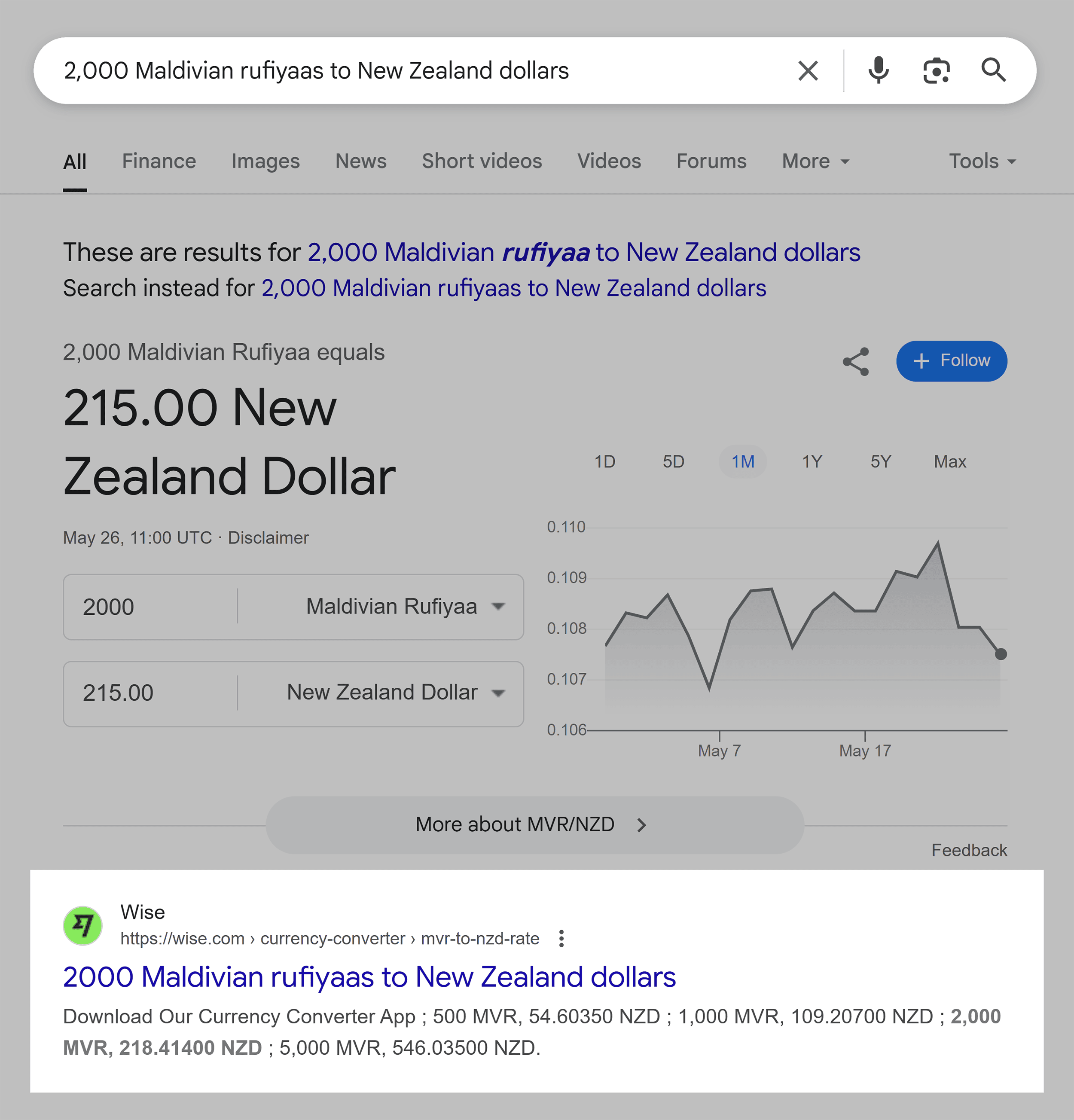
In fact, Wise ranks for tens of thousands of related keywords, including 36.5K that include the word “convert”:

Wise’s currency conversion pages demonstrate the difference between valuable programmatic content and thin content.
Each page (like USD to EUR) includes real-time rates, interactive calculators, historical charts, bank comparisons, and transactional capabilities. Not just basic templated text with a CTA.
Their pages solve real user problems rather than merely existing to capture keywords.
But that’s not the only way Wise uses programmatic SEO. They also use it for:
SWIFT codes for businesses (1.25 million pages):
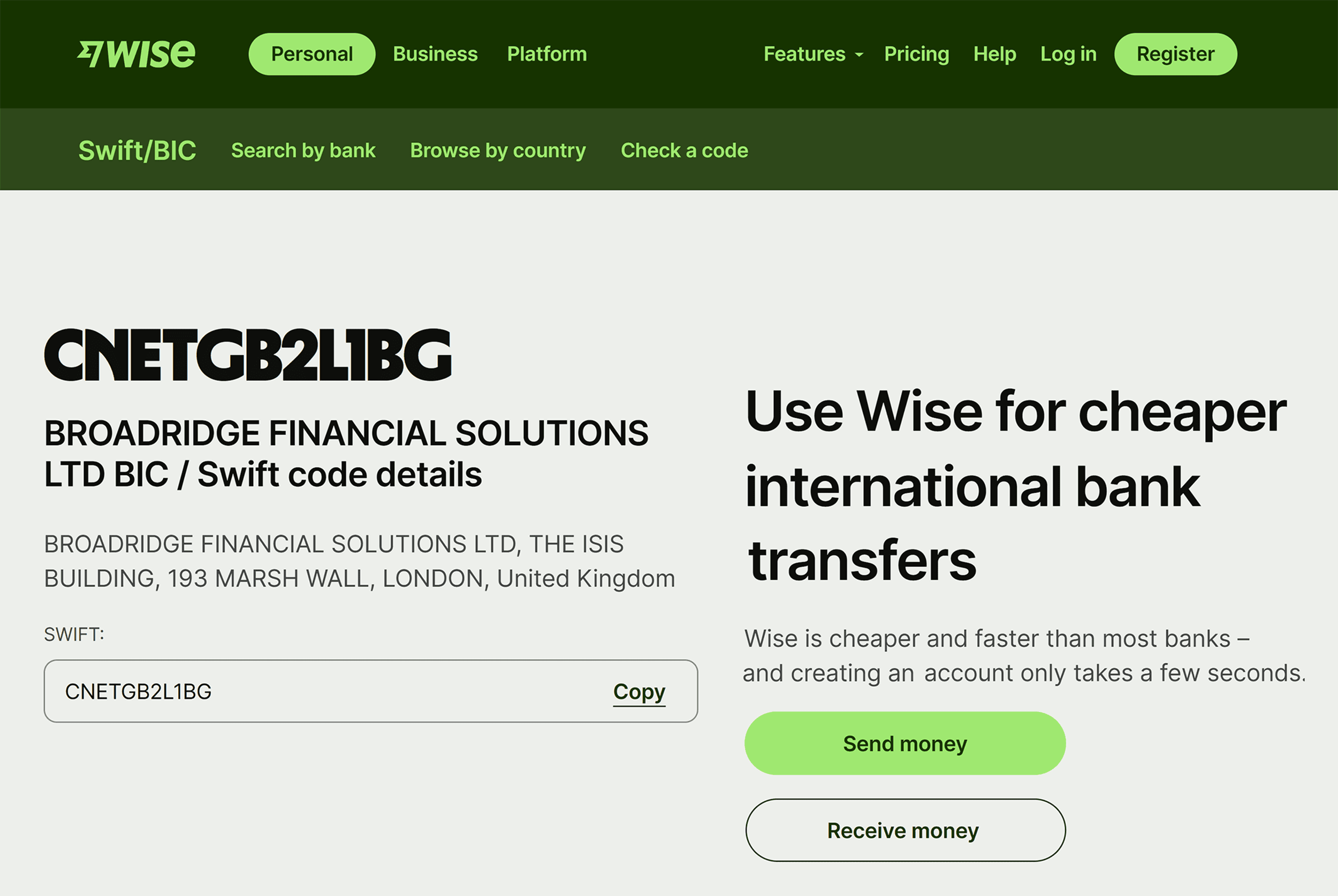
Stock tickers (280K+ pages):

And they also have:
Currency exchange pages (~8K) Account pages (~1K) “Send money” pages (~16K) IBAN pages (~10K) Comparison pages (~38K) Routing number pages (~45K) Various landing pages (~6K)Overall, the Wise website has more than 10 million pages. Combined, they drive 100+ million visits every month.

This isn’t necessarily the most relatable example. It would require extensive resources to pull off this kind of automated page creation.
But it does show the sheer scalability and ranking power of programmatic SEO.
2. Tripadvisor
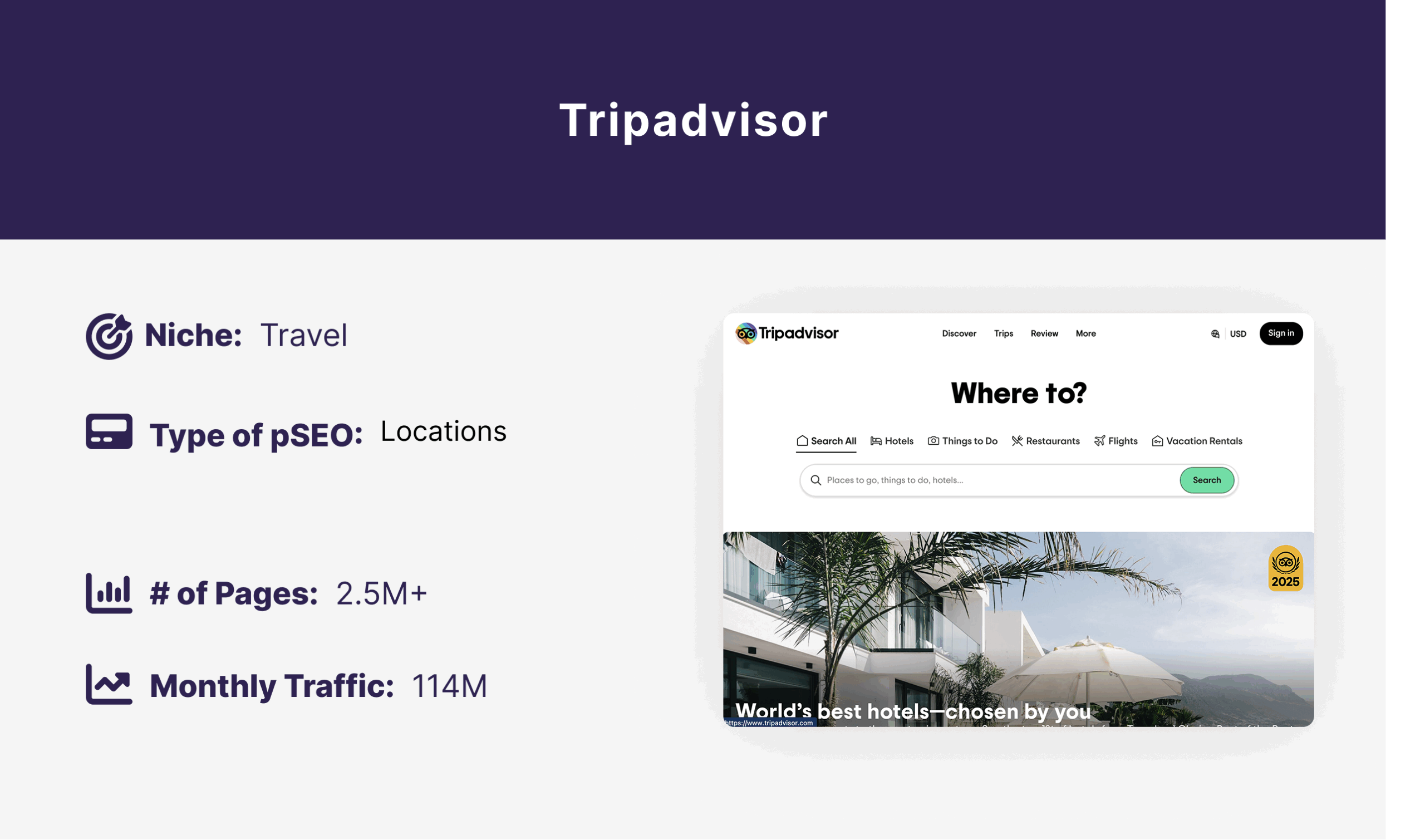
Tripadvisor uses programmatic SEO for its location pages.
Search for “things to do in [city]” and you’ll see how they’ve dominated this pattern.
For example, here’s the result for “things to do in Paris”:
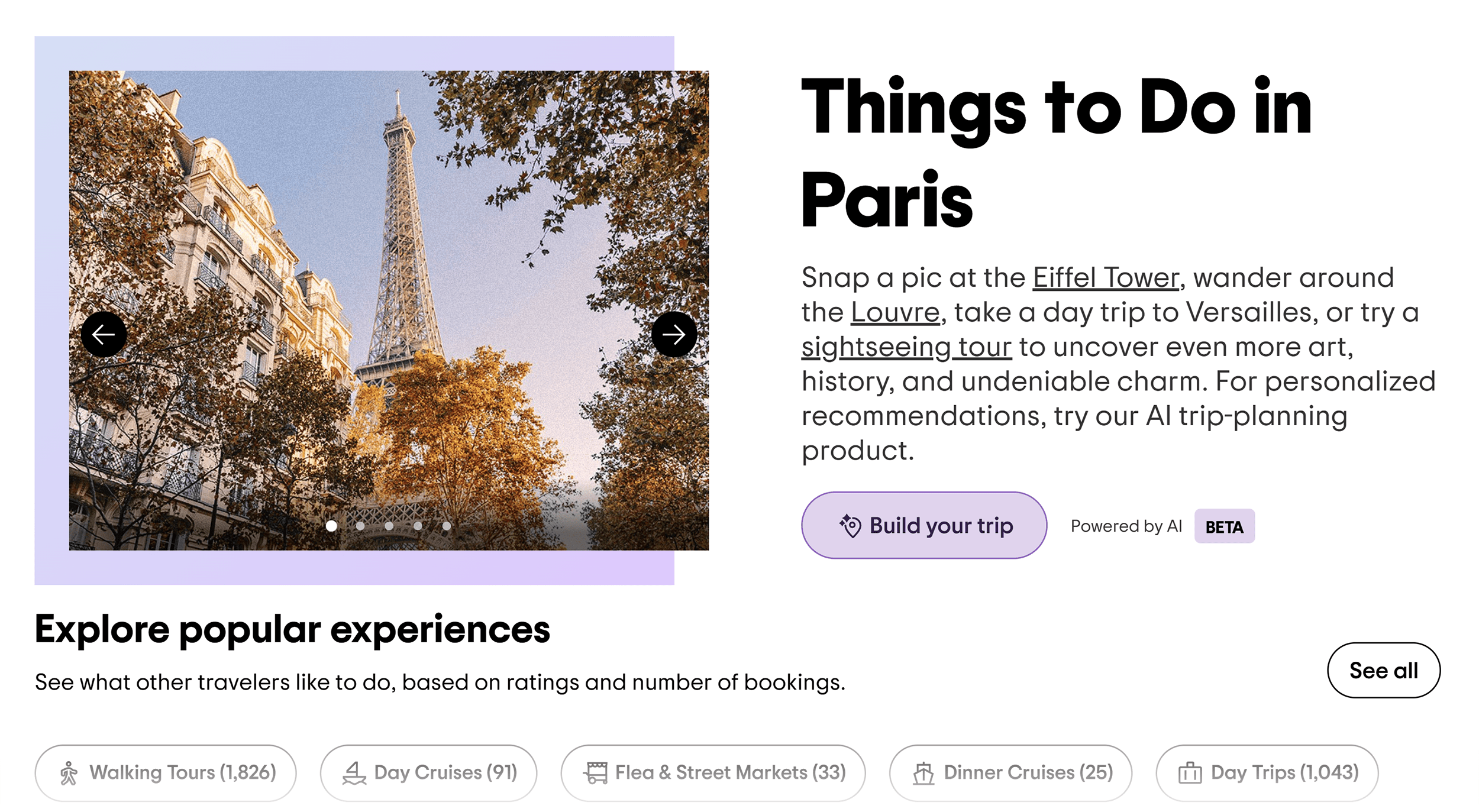
And this is the result for “things to do in New York”:

Each page follows the same structure. But each one is populated with location-specific attractions, reviews, and booking options unique to that destination.

These pages collectively drive millions of organic traffic to Tripadvisor.
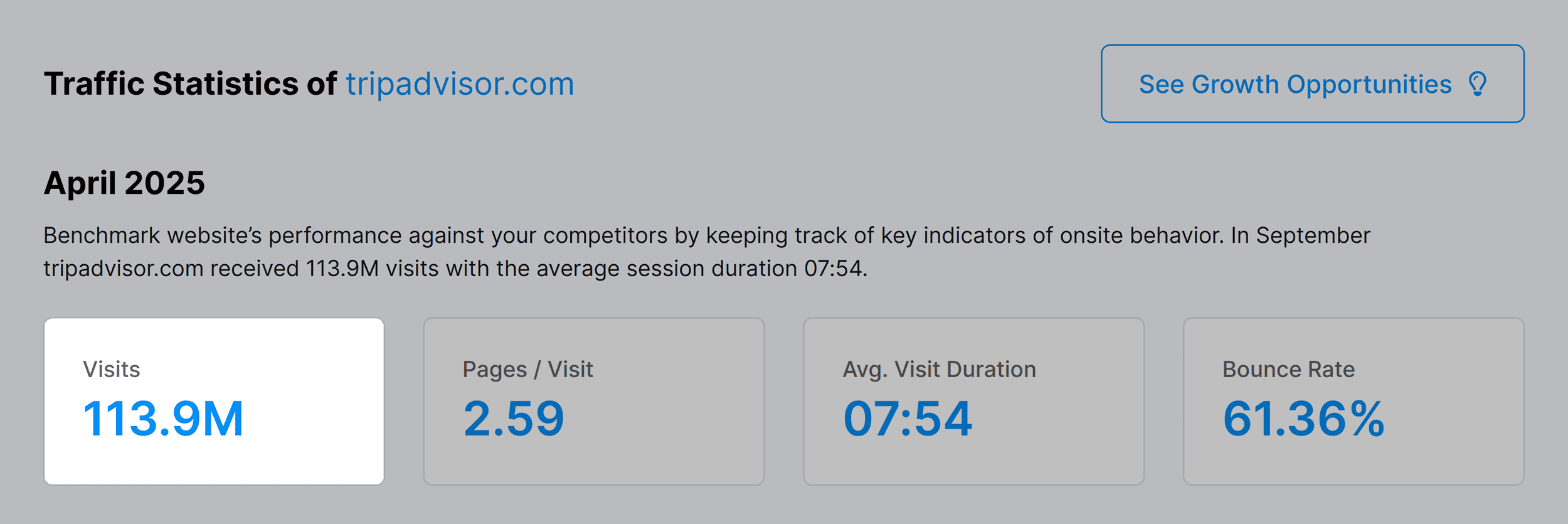
Why does this work so well?
Because Tripadvisor is able to meet the pain points of users all over the world. Travellers are always looking for things to do in different locations.
And Tripadvisor can cater to this need with its vast array of data on landmarks, sights, and activities. Plus, they have proprietary user data (like reviews) that helps make every programmatically generated page unique and useful.
3. Zillow

Zillow uses programmatic SEO to generate thousands of hyper-local pages for every city, neighborhood, and property type to capture long-tail real estate search traffic.
The site transforms raw data (like home value estimates, price trend visualizations, school information, and walkability scores) into context-rich resources that both rank well and help users make important decisions.
And they have A LOT of listings.
I trawled through their sitemaps and found various groups of pages:
Home values by location (173K pages) Miscellaneous listings (9K pages) School districts (146K pages) For sale by agent (1.6M pages) For sale by owner (26K pages) New construction (160K pages) Pending (1.5K pages) Recently sold (7.5M pages) For rent (1.2M pages)Then there are other sitemaps covering buildings, apartments, off-market, other, and “for sale” suggesting tens of millions of pages.
But one sitemap index for off market homes contained 4999 sitemaps, each with seemingly around 23K URLs. This would suggest there are more than 100 million URLs in this category.
Either there is some overlap on the pages (which would be impossible to manually check for) or Zillow lists pretty much every single home in the US on its site.
Regardless, Zillow has millions of pages. And these rely on programmatic SEO.
The result?
243 million organic visits every month.

4. Zapier
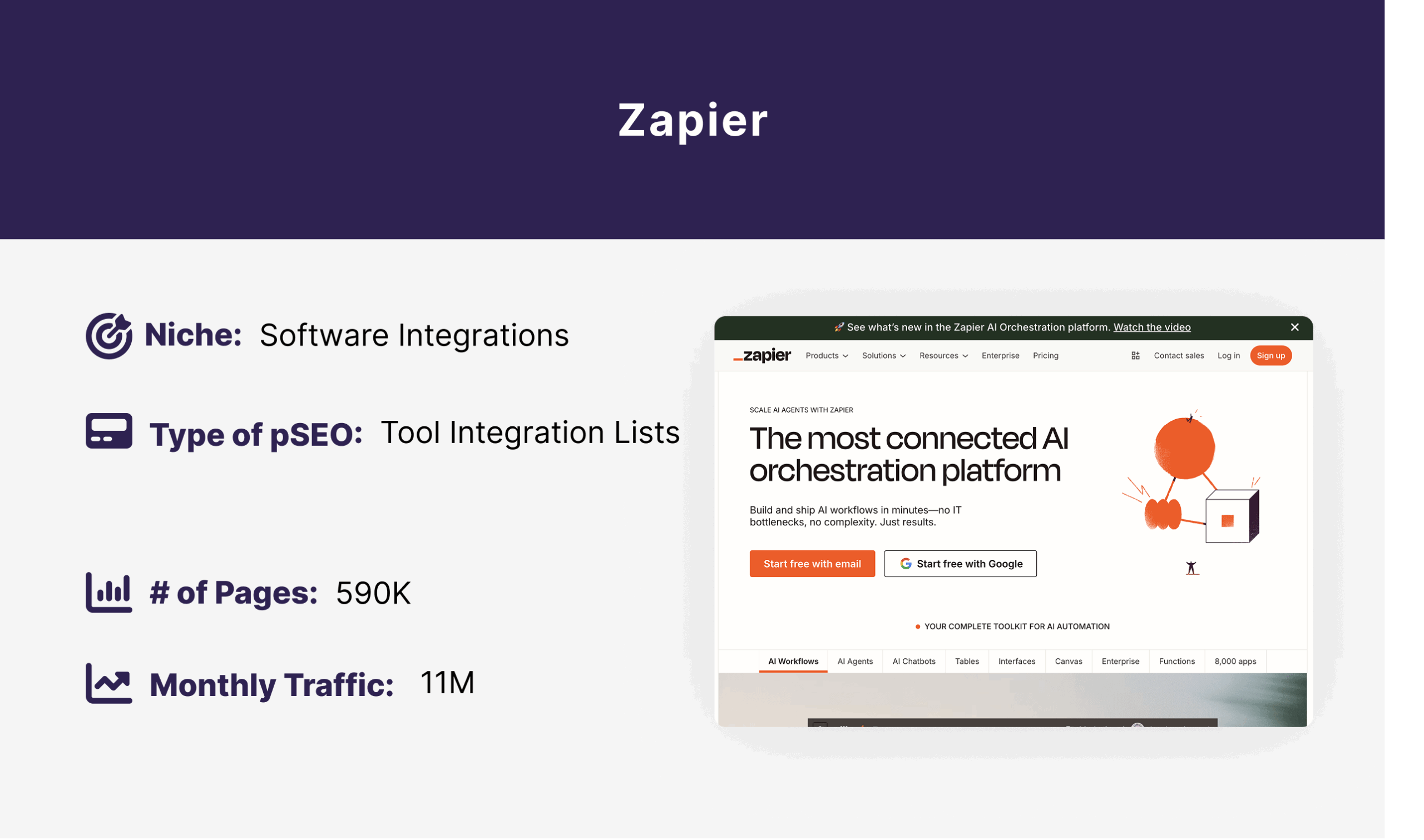
Zapier is an automation platform that connects different web apps and creates workflows based on these connections.
They generate detailed integration pages for every possible app combination to capture search intent around software integrations. With 590K+ pages, Zapier’s programmatic efforts are impressive.
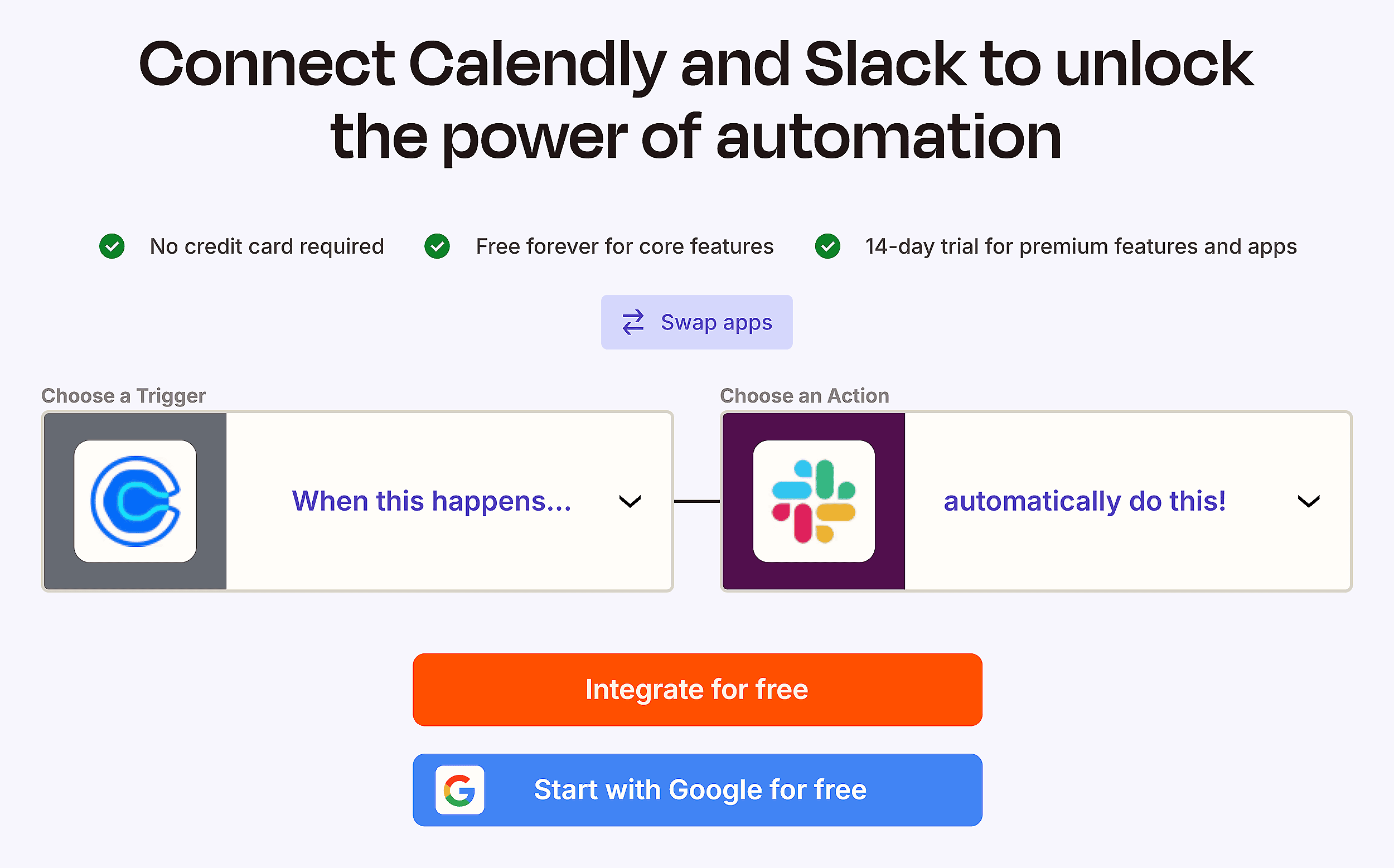
The /apps/ subfolder that contains these integration pages drives more than 610K organic visits every month:
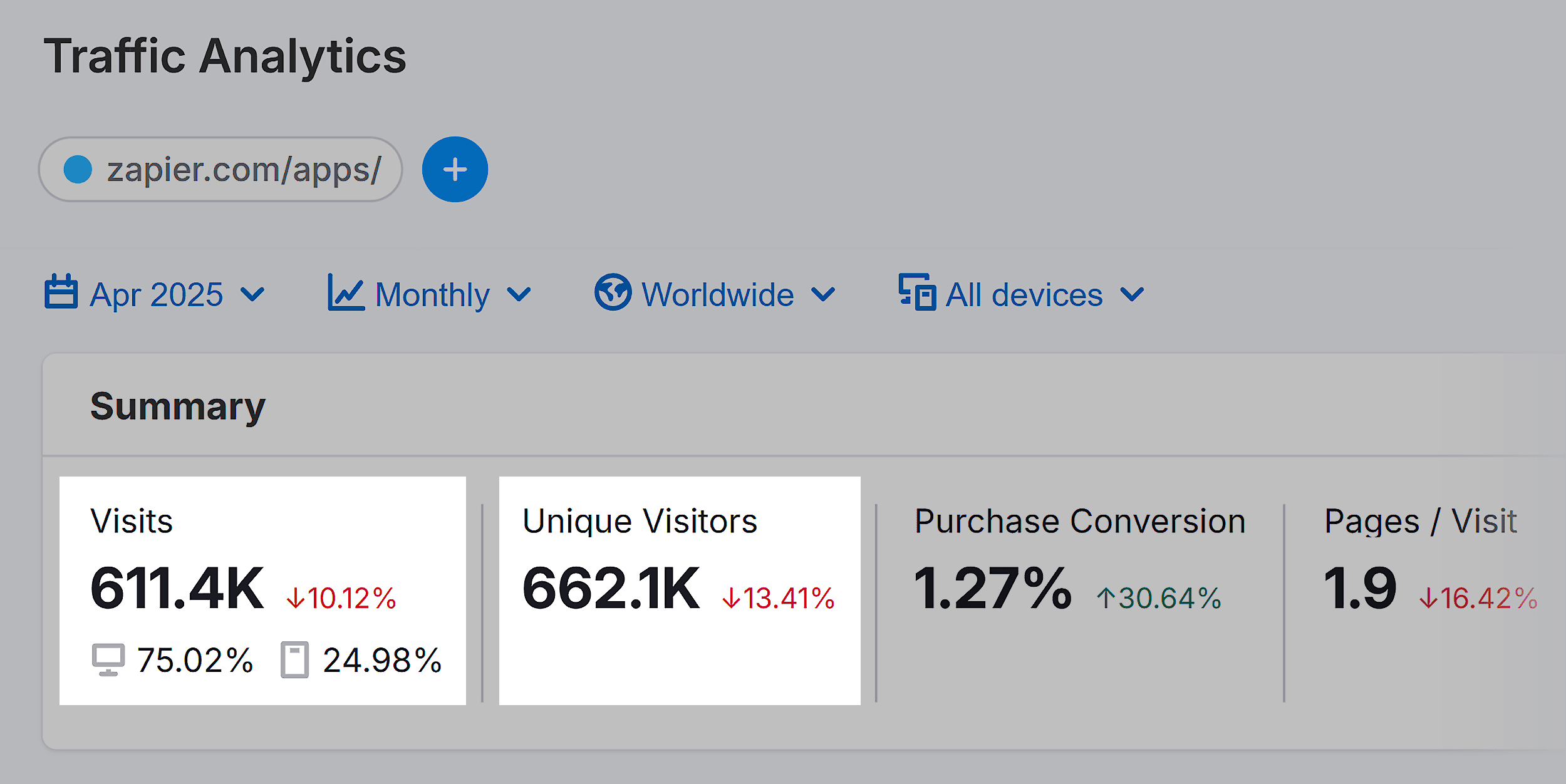
Each integration page (like “Connect Calendly to Slack”) offers specific use cases via templates…
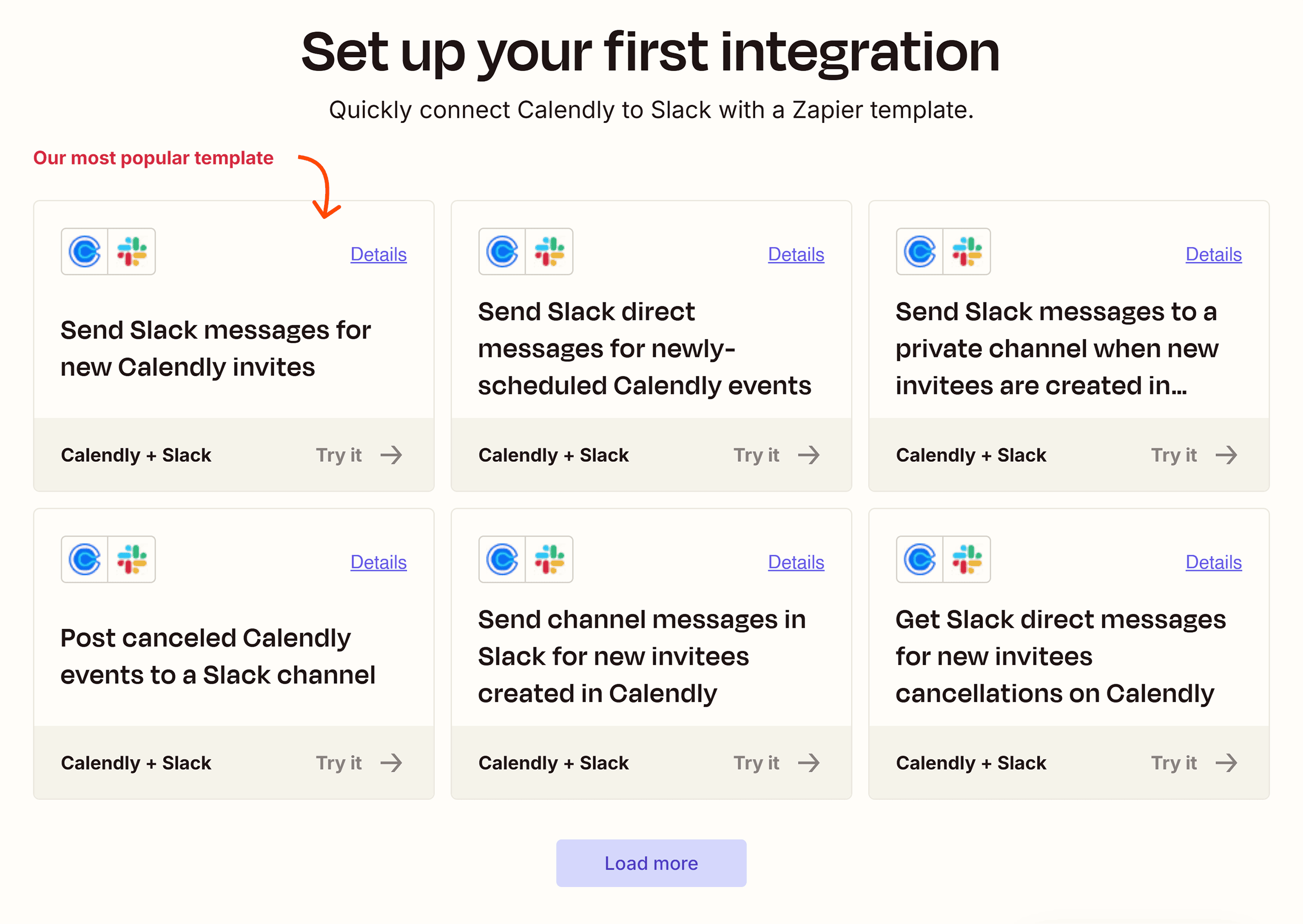
…along with lists of supported triggers and actions:
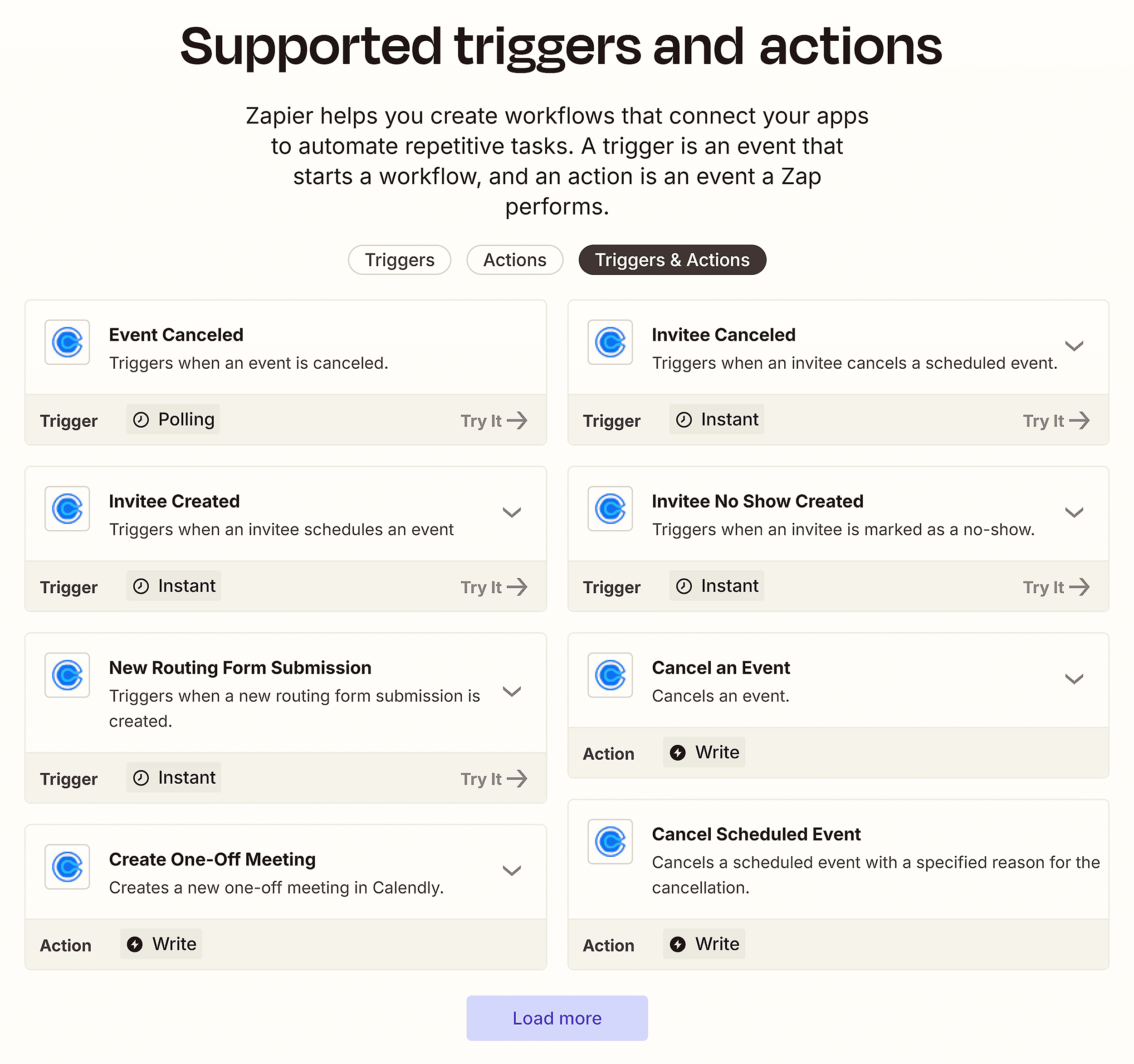
When pSEO Makes Sense (And When It Doesn’t)
Not every business can or should use programmatic SEO.
So before you spend resources building a system that cranks out thousands of pages, let’s be brutally honest about when this approach actually works.
Marketplace sites, aggregators, and directories are the perfect candidates for pSEO. Think Zillow (property listings), Tripadvisor (travel destinations), or Zapier (software integrations).
Why do these programmatic SEO sites work so well?
Because each piece of content changes enough to justify its own page. Plus, users genuinely need that specific information or functionality.
Simply changing “[City] plumbers” to target 500 locations while offering identical generic text isn’t programmatic SEO — it’s spam.
The Dangers of Programmatic SEO
Programmatic SEO can look a lot like spam if you just create a bunch of thin content.
But even if it doesn’t look like spam, if users have a different intent or there are better sources out there, you’ll struggle to rank.
We’ve seen programmatic efforts have negative consequences with the likes of G2 and ZoomInfo.
ZoomInfo’s databases of companies and people still drive significant traffic:
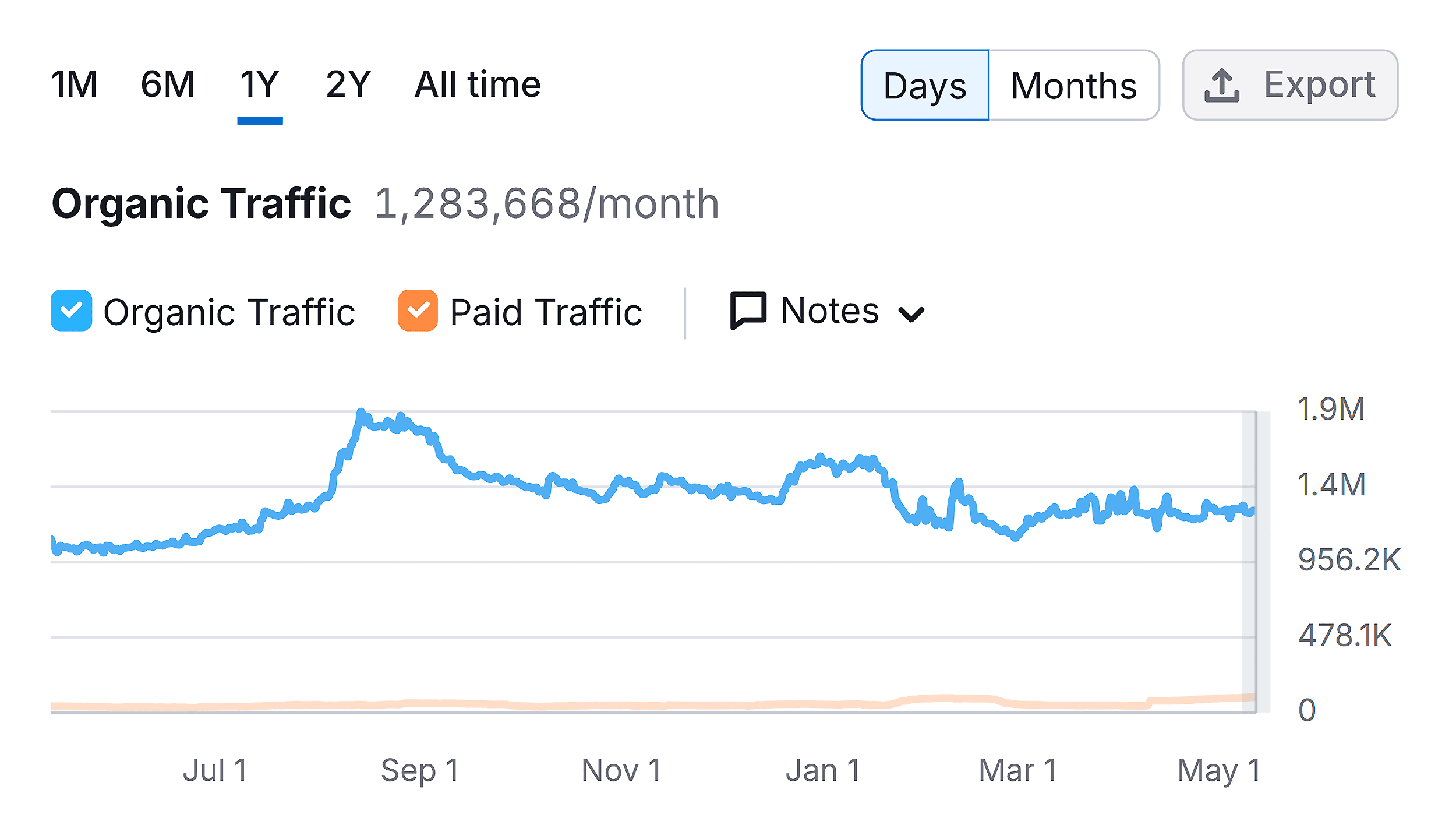
But nowhere near as much as they used to:

The same goes for G2.
The product review and comparison site used to drive almost 12 million monthly visits back in 2021. But now it gets less than 1 million:

Both sites saw major drops in traffic on at least two occasions:
Between May-August of 2021, coinciding with several major Google updates (including for spam specifically) In October 2023, again coinciding with major Google updates, and again with one for spam specificallyThere are other factors at play too, like the prevalence of AI Overviews in search results, Reddit’s SERP dominance, and more authoritative competition.
But these are two examples of programmatic SEO working very well — until it doesn’t.
How to Know if Programmatic SEO Is Right for You
Before you invest in programmatic SEO, ask yourself the following questions:
Do you have lots of proprietary data, user-generated content, or structured information at your disposal? Does your site already have rankings and authority? Will your hypothetical pages each provide real value individually? Would you be proud to show each individual page to any user?You should be able to answer “yes” to all of these questions. If not, rethink whether programmatic SEO is worth your investment.
How to Build Your Programmatic SEO Strategy in 5 Steps
Step 1: Find Scalable Keywords
The foundation of programmatic SEO isn’t finding high-volume keywords. It’s about identifying patterns that you can target systematically.
What Good Programmatic SEO Keywords Look Like
You’re looking for search queries that follow consistent formats but change one or two variables.
Like these examples:
[product] vs [competitor] best restaurants in [city] convert [currency] to [currency] [language] to [language] translation average salary for [profession] cheap flights from [location] to [location]The key is evaluating whether the underlying search intent stays consistent across variations.
For example, let’s take a closer look at Wise’s currency converter pages:
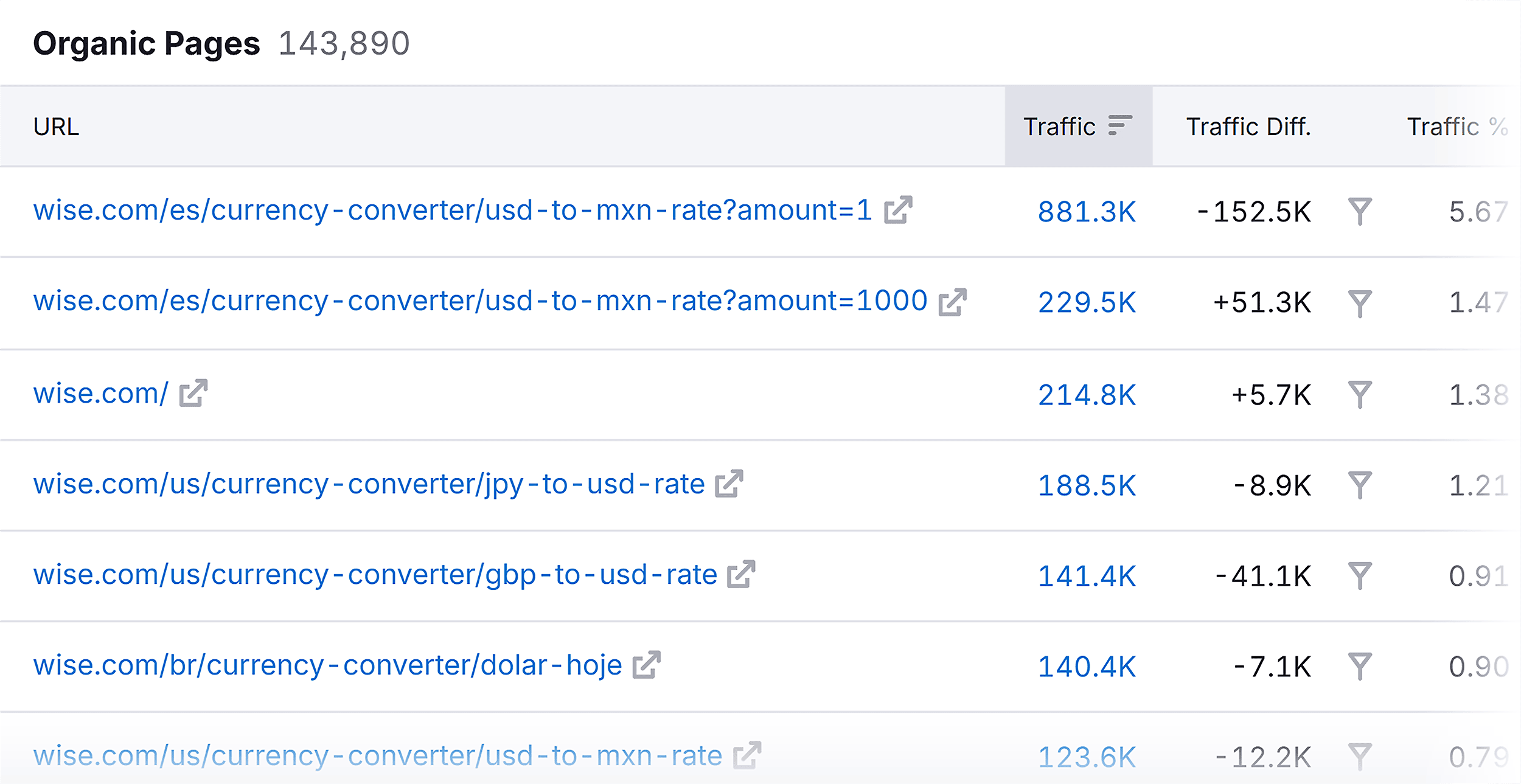
Someone searching “USD to EUR” wants the same core information as someone searching “GBP to JPY.” They just want to convert different currencies.
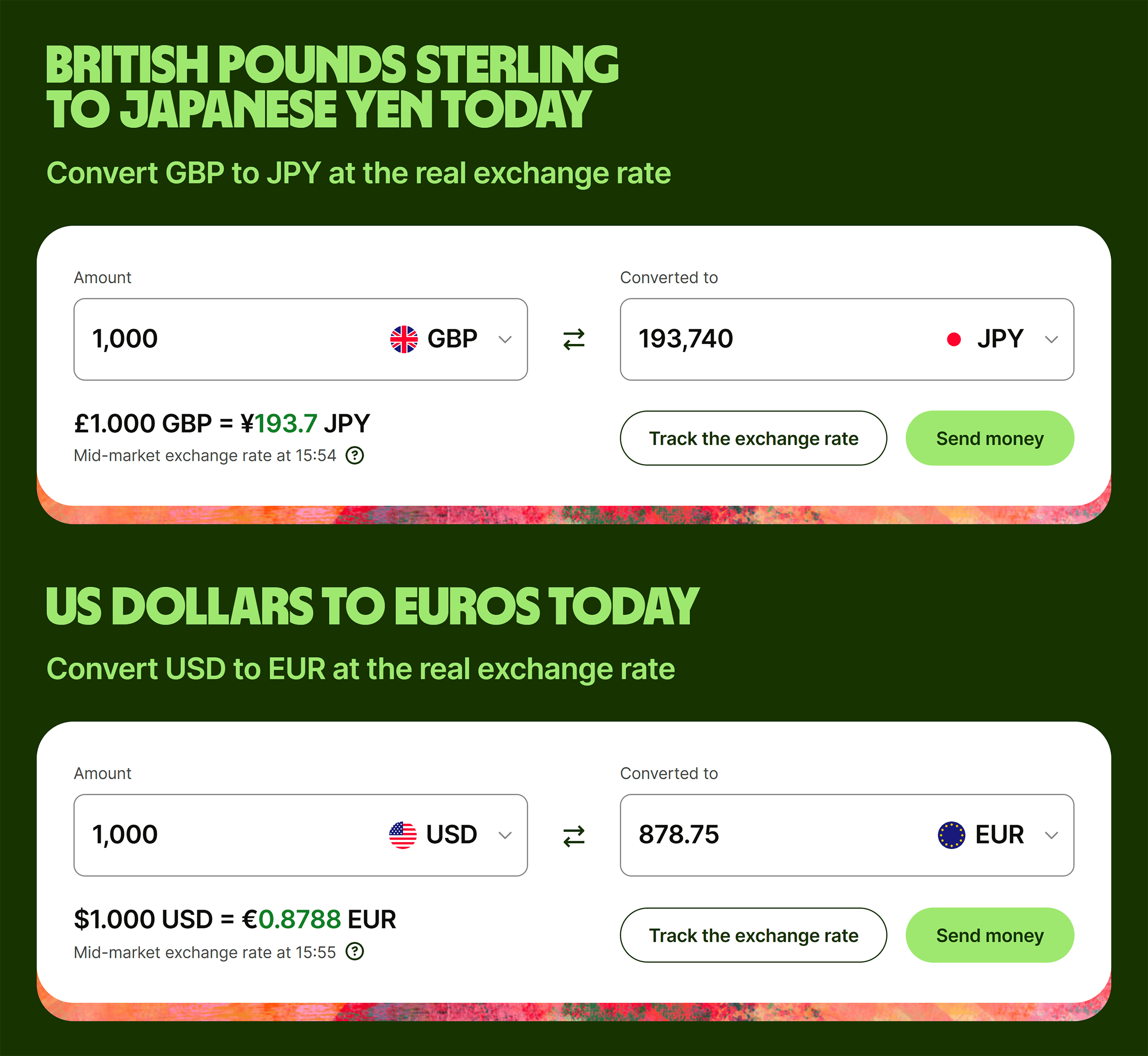
But these pages aren’t just glorified calculators. They also feature historic conversion charts:
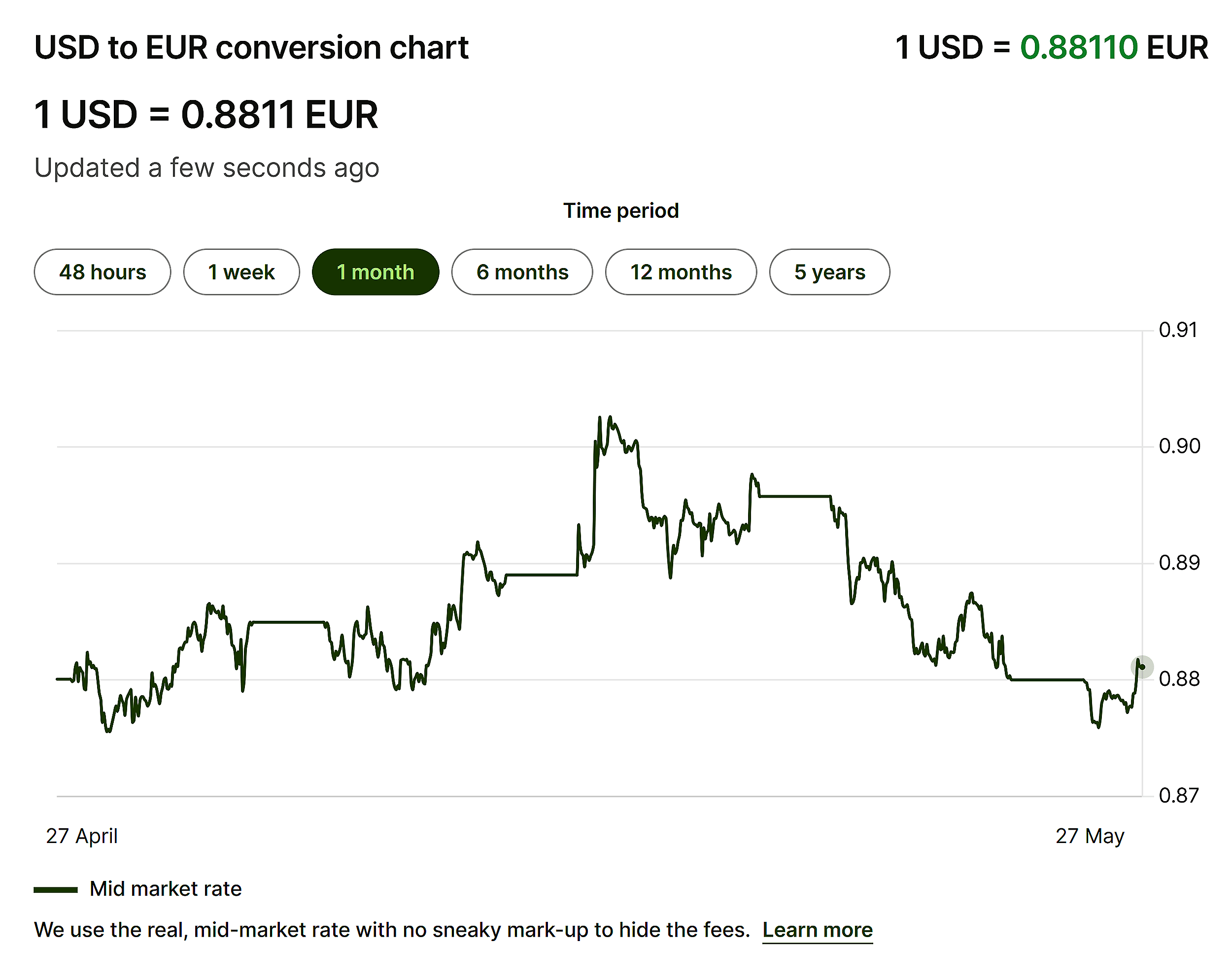
Tables of the highs, lows, averages, and changes:

And a comparison of Wise’s own rates versus competitors:

This is why they dominate these searches: they’re solving the specific problem searchers have with each currency pair. It’s the same intent but with different variables — the right mix for programmatic SEO.
How to Find Your Own pSEO Keywords
Good programmatic SEO keywords consist of two key parts:
Head term: The consistent part that appears in all variations (e.g., “Resume templates”) Modifier: The variable element that changes with each page (e.g., job titles like “product managers” or “systems engineers”)You can use Semrush’s Keyword Magic Tool to find keywords like this.
For example, imagine we’re looking to create programmatic content around the head term “SEO tools”:

We’d look for patterns where only one variable changes across multiple keywords.
For example, patterns like “best seo tools for [business type]”:
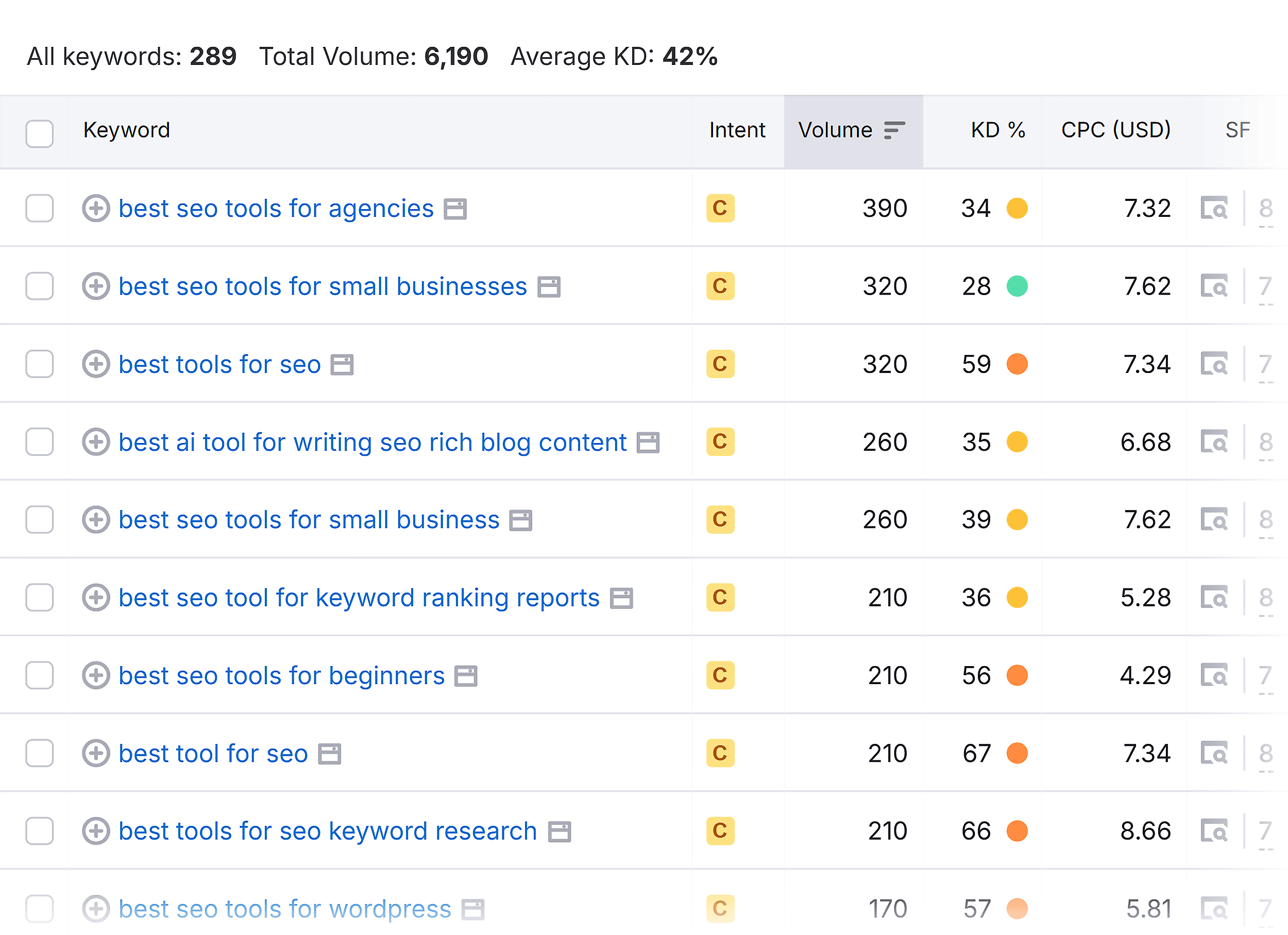
Once you’ve identified a potential pattern, you’ll need a variety of modifiers to create your programmatic pages.
The right modifiers expand your keyword targeting exponentially, while maintaining consistent search intent.
Here are some keyword modifiers that work across multiple niches:
Geographic modifiers: “in [city]”, “near [location]”, “for [country]” Comparison modifiers: “vs [competitor]”, “alternative to [product]”, “[product] or [product]” Attribute modifiers: “best [product] for [use case]”, “[color] [product]”, “[size] [product]” Professional modifiers: “for [profession]”, “[skill] for [industry]”, “[tool] for [job]” Format modifiers: “[topic] template”, “[topic] calculator”, “[topic] checklist” Question modifiers: “how to [verb] [topic]”, “can [subject] [verb]”, “why does [topic] [verb]” Statistical modifiers: “average [metric] for [category]”, “[topic] statistics [year]”Set the Keyword Difficulty to “(KD) < 30” and use the “Include” filter to narrow down to specific patterns (e.g., include “for” to find “seo tools for [industry]”).
Finally, sort by volume to prioritize higher-traffic opportunities.
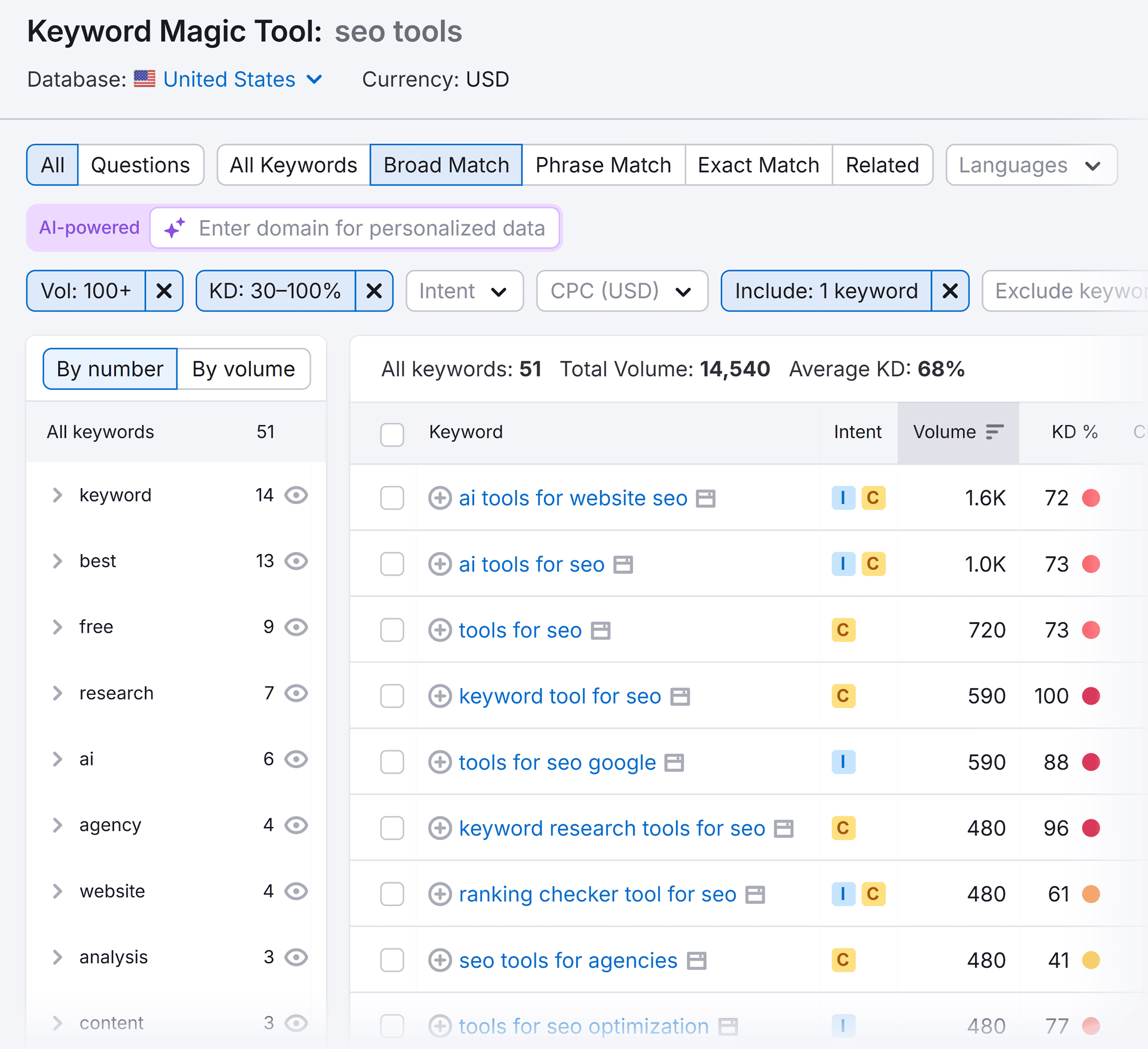
Next, check the SERPs for several variations of your pattern and to confirm similar content types appear across variations.
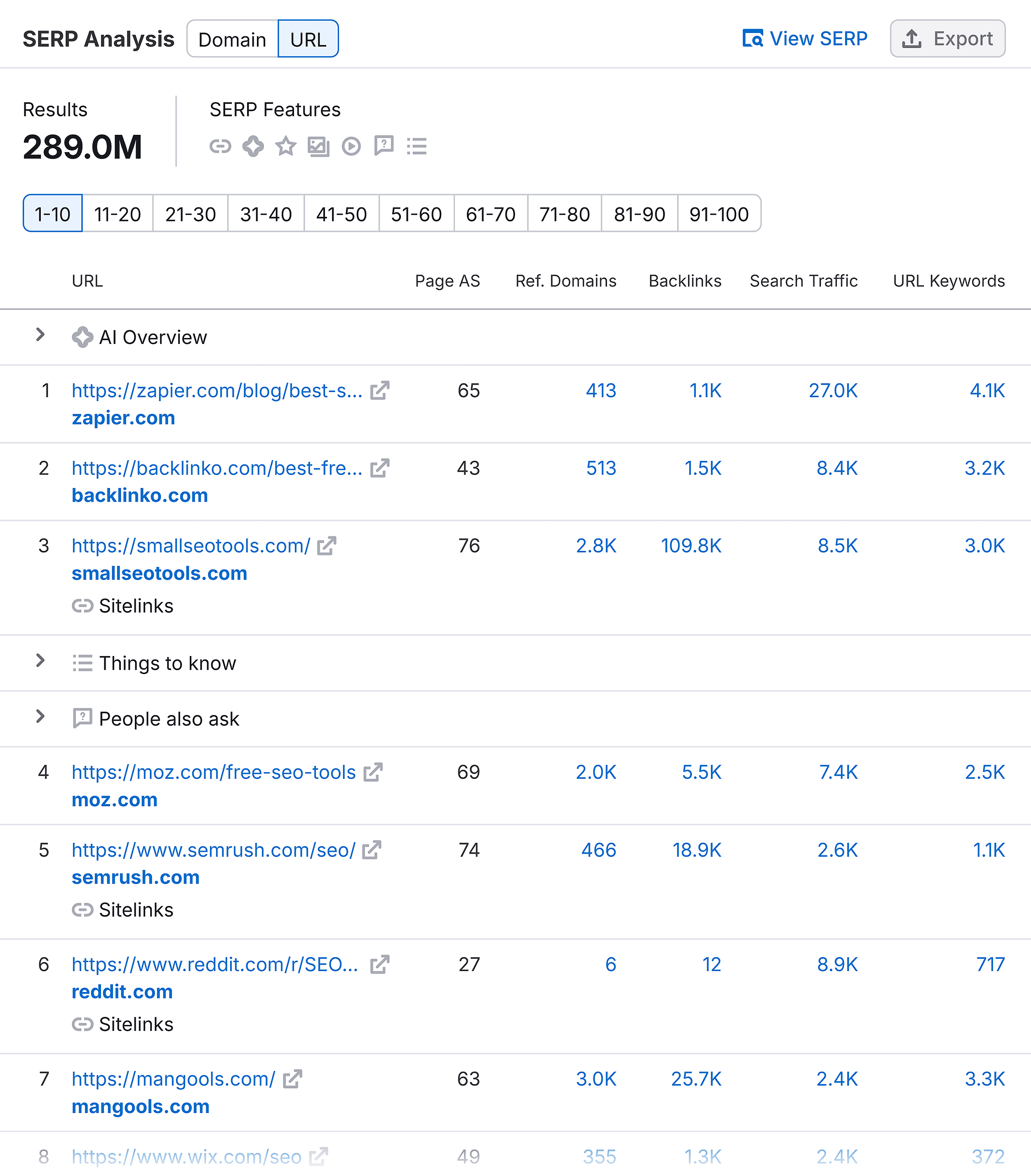
This is an important step. Let’s say you were planning to programmatically create pages that list the top SEO tools for different business types.
Your plan was to create pages that contained a simple list with basic facts and stats about each tool, along with some features and pricing info. You have a database with all this information, and you plug in an AI tool’s API to help create unique content for each page.
But then you check the SERP for some common terms and realize that Google seems to be rewarding more detailed lists.
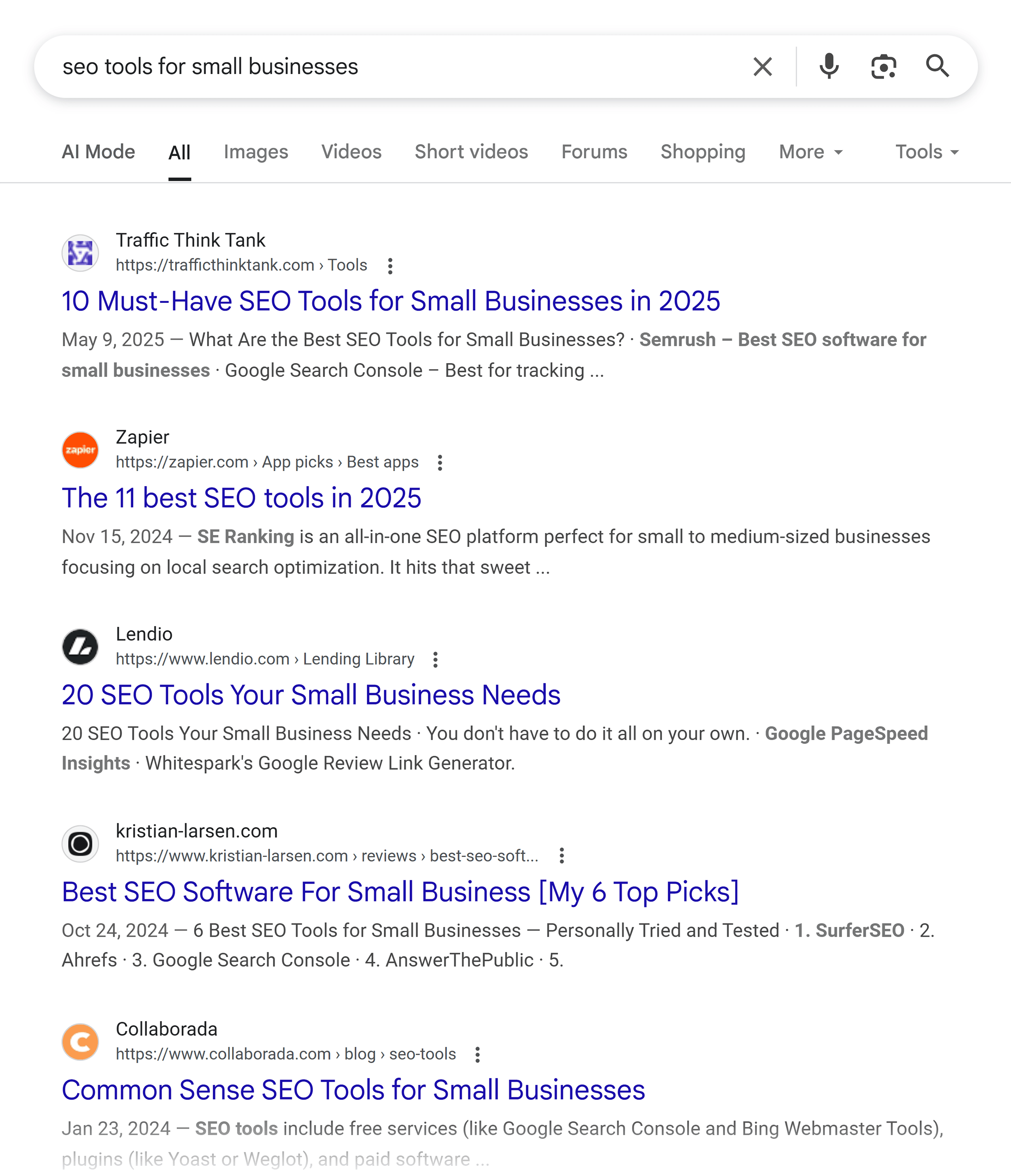
Lists that feature:
In-depth tool info Expert takes and opinions Screenshots that show the writer has used the toolDo you think your programmatic content will rank alongside these guides?
Probably not.
That’s why checking the SERP and evaluating the search intent is so important.
But once you do have a list of ideal keywords to target, you can export it and group by modifier types (locations, products, features). This organized data will feed directly into your template planning.
Step 2: Collect and Structure Data
Every successful programmatic SEO project thrives because of its data.
Without unique, valuable information, you’re just going to create thin pages Google will eventually demote.
You have three main options for data acquisition:
Proprietary data: Information you own or generate that competitors can’t access is the gold standard. Think Zapier’s integration data or Tripadvisor’s reviews. If you have proprietary data, your programmatic SEO has built-in defensibility. Public data with added value: You can transform, combine, or present data from public sources in uniquely valuable ways (like from government databases or APIs). Because anyone else can access this data, how you present it is absolutely key. Scraped data: This is the riskiest option. If you go this route, focus on adding significant value through analysis, visualization, or aggregation. Remember: scraping should be a starting point, not your end product.If you’re struggling to find data, here are some free datasets for programmatic SEO across different niches (including stocks, salary data, social media, books, and more).
Just remember that anyone can find these data sets. So it’s best to use them for inspiration rather than hinging your pSEO campaign on them.

Step 3: Create Quality Content Templates
Templates are the engine of programmatic SEO. But they’re also where most projects go wrong. It’s easy to generate 100,000 pages. It’s hard to make them genuinely useful.
Start by manually creating 3-5 examples of your target pages. These are your test runs. Use them to validate that your data, structure, and content actually helps users.
Once you’re happy, build your template with the following:
500–1,000+ words of helpful content: Use headings, bullet points, and other visual breaks to improve clarity Conditional content logic: Use if/then rules to tailor each page’s copy, examples, recommendations, or CTAs to match the specific data or topic Rich elements like HTML tables, charts, or maps: Visualize your data to make your page interactive and genuinely informative Internal links: Guide users to related pages, deeper resources, or next stepsStep 4: Technical Setup (Based on Skill Level)
You don’t need to be a developer to launch a programmatic SEO site. But you will need to choose your approach based on your technical comfort and scale requirements.
Here are a few examples of what your setup might look like depending on your skill level:
| Beginner / No-code | 1-100 pages | Google Sheets WordPress or Webflow WP All Import or similar plugins | Export keyword data to spreadsheet Write templates using variables Use formulas/find+replace to populate content Bulk import via plugin | Non-technical users launching small projects |
| Intermediate | 100-1,000 pages | Airtable / Notion Webflow CMS Zapier / Make Jekyll, Hugo (SSGs with data files) | Build structured data in Airtable Connect to Webflow CMS via Make Auto-generate new pages when data is added | Marketers comfortable with no-code automation tools |
| Advanced | 1,000+ pages | Custom apps Next.js or similar CMS APIs Databases with caching CI/CD pipelines | Develop custom app (e.g., with Node.js) Fetch data from database (e.g., PostgreSQL) Generate and deploy pages with frameworks like Next.js via Vercel | Developers or teams with engineering resources |
Step 5: Monitor and Improve Your SEO
Like any SEO strategy, programmatic SEO is an ongoing effort. Because you might have hundreds or thousands of pages to manage, staying on top of performance and technical issues is key.
Here are some important things to track, and the best tool(s) to use:
Indexation rate: What percentage of your pages are in Google’s index? (Google Search Console) Crawl stats: How frequently is Google visiting your pages? (Google Search Console) Traffic distribution: Are certain variations performing better than others? (Google Analytics) Conversion patterns: Which page types drive valuable actions? (Google Analytics) Page-level metrics: What do your loading speeds, bounce rates, and time on page metrics look like? (PageSpeed Insights, Google Analytics) Cannibalization issues: Are your programmatic pages competing with each other? (Google Search Console, Semrush Position Tracking)Is Programmatic SEO Really the Way to Go?
It’s hopefully clear by now that programmatic SEO can yield some pretty impressive results.
But it should also be clear that it’s not the right choice for everyone.
Unless you have:
Existing authority Plenty of resources Unique dataIt’s probably not the right approach for your website (at least not yet).
For now, I recommend focusing on growing your site with quality, not quantity. For more on this, check out our guide to creating high-quality SEO content.

 Lynk
Lynk 











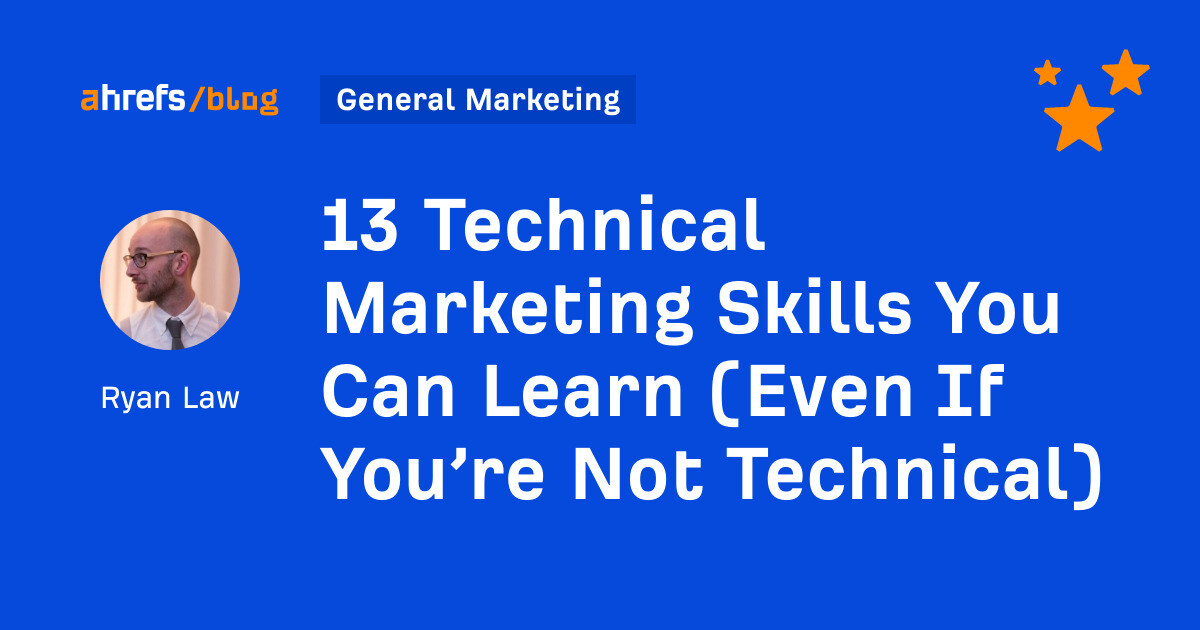







![The 2026 AI Search Benchmark Every SEO Leader Needs [Webinar] via @sejournal, @lorenbaker](https://www.searchenginejournal.com/wp-content/uploads/2025/11/1-259.png)










